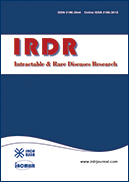Volume 10, Issue 4
Displaying 1-10 of 10 articles from this issue
- |<
- <
- 1
- >
- >|
Review
-
Article type: review-article
2021 Volume 10 Issue 4 Pages 223-237
Published: November 30, 2021
Released on J-STAGE: December 04, 2021
Advance online publication: November 12, 2021Download PDF (410K) -
Article type: review-article
2021 Volume 10 Issue 4 Pages 238-245
Published: November 30, 2021
Released on J-STAGE: December 04, 2021
Advance online publication: October 15, 2021Download PDF (414K) -
Article type: review-article
2021 Volume 10 Issue 4 Pages 246-256
Published: November 30, 2021
Released on J-STAGE: December 04, 2021
Advance online publication: November 06, 2021Download PDF (555K) -
Article type: review-article
2021 Volume 10 Issue 4 Pages 257-262
Published: November 30, 2021
Released on J-STAGE: December 04, 2021
Advance online publication: October 31, 2021Download PDF (286K)
Brief Report
-
Article type: brief-report
2021 Volume 10 Issue 4 Pages 263-268
Published: November 30, 2021
Released on J-STAGE: December 04, 2021
Advance online publication: September 16, 2021Download PDF (458K) -
Article type: brief-report
2021 Volume 10 Issue 4 Pages 269-275
Published: November 30, 2021
Released on J-STAGE: December 04, 2021
Advance online publication: September 30, 2021Download PDF (996K) -
Article type: brief-report
2021 Volume 10 Issue 4 Pages 276-282
Published: November 30, 2021
Released on J-STAGE: December 04, 2021
Advance online publication: November 06, 2021Download PDF (1030K)
Communication
-
2021 Volume 10 Issue 4 Pages 283-287
Published: November 30, 2021
Released on J-STAGE: December 04, 2021
Advance online publication: November 26, 2021Download PDF (262K) -
2021 Volume 10 Issue 4 Pages 288-291
Published: November 30, 2021
Released on J-STAGE: December 04, 2021
Advance online publication: November 12, 2021Download PDF (263K)
Letter
-
Article type: letter
2021 Volume 10 Issue 4 Pages 292-293
Published: November 30, 2021
Released on J-STAGE: December 04, 2021
Advance online publication: September 25, 2021Download PDF (228K)
- |<
- <
- 1
- >
- >|
